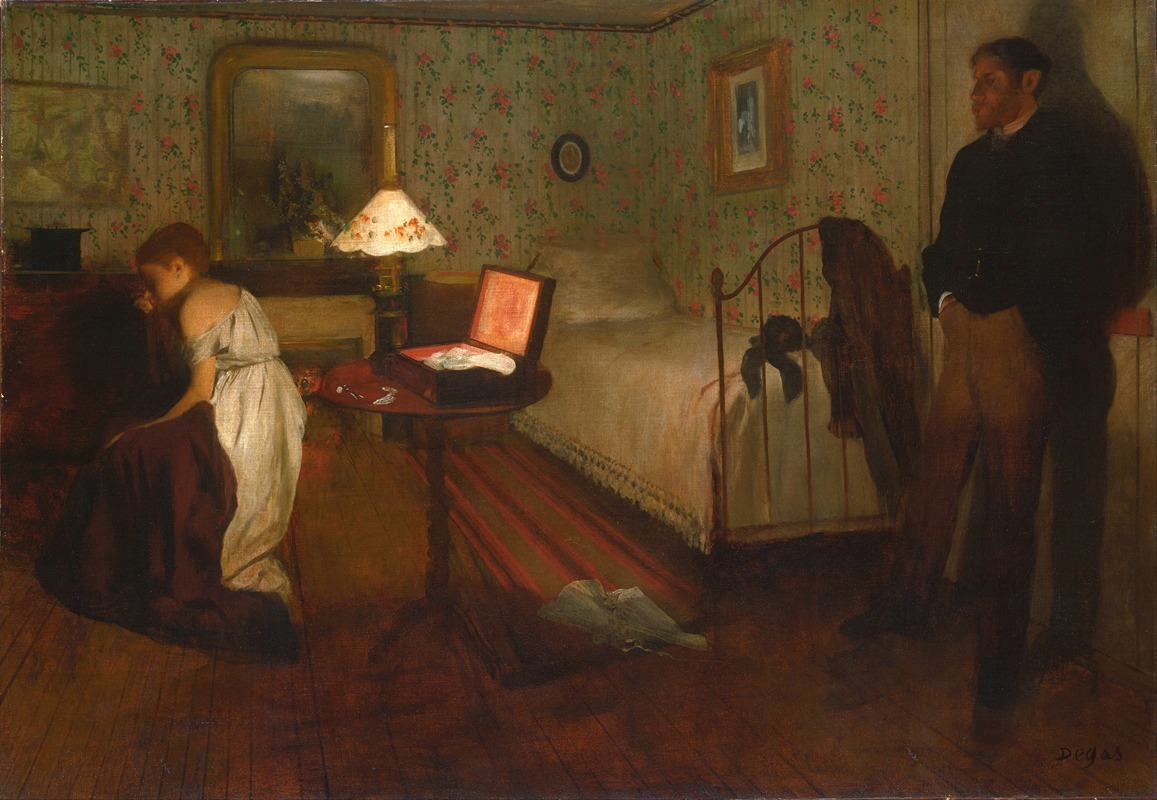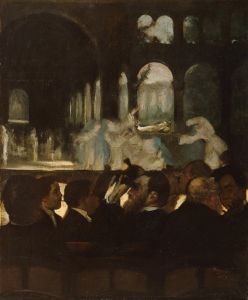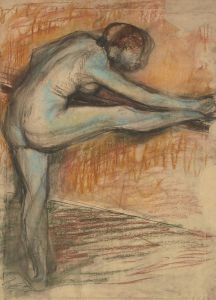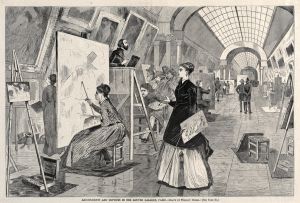
Interior
A hand-painted replica of Edgar Degas’s masterpiece Interior, meticulously crafted by professional artists to capture the true essence of the original. Each piece is created with museum-quality canvas and rare mineral pigments, carefully painted by experienced artists with delicate brushstrokes and rich, layered colors to perfectly recreate the texture of the original artwork. Unlike machine-printed reproductions, this hand-painted version brings the painting to life, infused with the artist’s emotions and skill in every stroke. Whether for personal collection or home decoration, it instantly elevates the artistic atmosphere of any space.
"Interior," also known as "The Rape," is a painting by the French artist Edgar Degas, created around 1868-1869. This work is notable for its departure from Degas's more commonly known subjects, such as ballet dancers and racehorses, and instead delves into a more dramatic and psychologically intense scene.
The painting depicts a dimly lit, claustrophobic interior of a bourgeois apartment. The composition is dominated by a tense and ambiguous interaction between a man and a woman. The man stands near the door, partially in shadow, with a stern and imposing posture. He is dressed in dark, formal clothing, which adds to his menacing presence. The woman, in stark contrast, is seated on the floor near a bed, with her back to the viewer. She appears to be in a state of distress, her body language suggesting vulnerability and fear. Her white dress and the light that falls on her create a striking contrast with the dark, oppressive surroundings.
The room itself is meticulously detailed, with various objects that contribute to the overall mood of the painting. A bed with disheveled sheets, a small table with a lamp, and a mirror reflecting part of the scene add to the sense of realism and immediacy. The use of light and shadow is particularly effective in creating a sense of unease and tension.
"Interior" is often interpreted as a narrative painting, though the exact story it tells remains ambiguous. Some art historians suggest that it depicts a scene of sexual violence or coercion, given the title "The Rape" that is sometimes associated with it. However, Degas himself did not provide a definitive explanation for the scene, leaving much to the viewer's interpretation.
This painting is significant in Degas's oeuvre for its exploration of psychological depth and its departure from the more public and performative subjects he is known for. It reflects his interest in the complexities of human relationships and the darker aspects of human nature. The work also demonstrates Degas's skill in composition, use of light, and ability to convey emotion through body language and setting.
"Interior" is housed in the Philadelphia Museum of Art, where it continues to be a subject of study and fascination for art historians and visitors alike. Its enigmatic nature and emotional intensity make it a compelling example of Degas's versatility and depth as an artist.


















